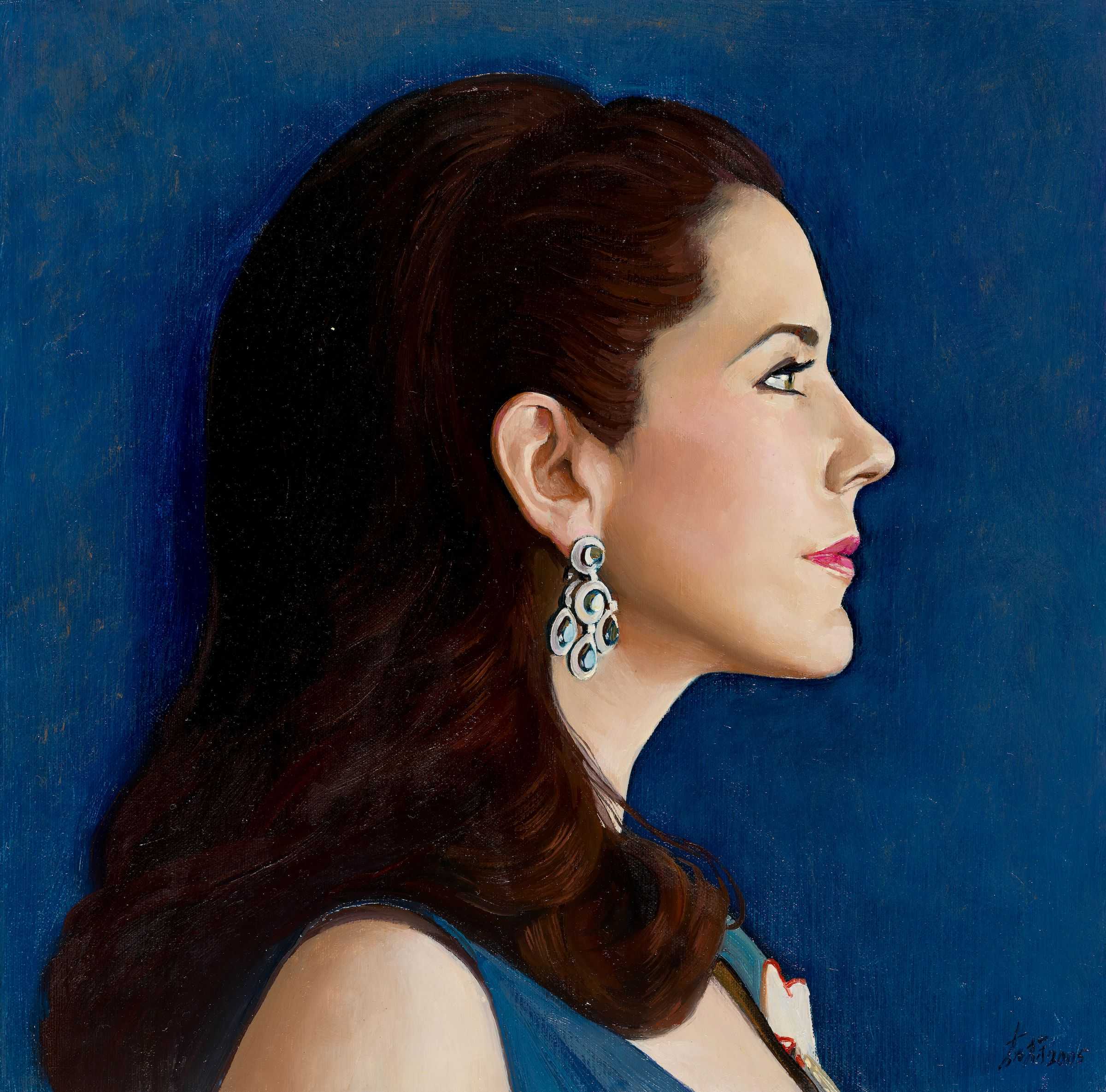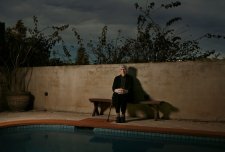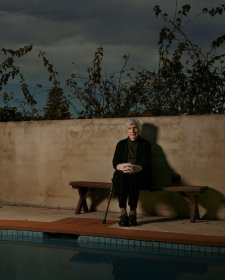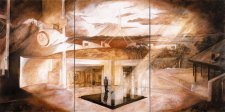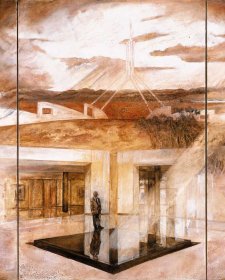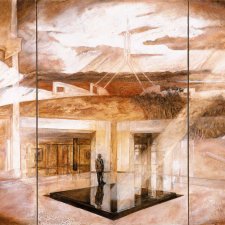Royalty has arrived in the collection of the National Portrait Gallery. Unveiled on October 7, the magnificent full-length portrait of HRH Crown Princess Mary of Denmark by Sydney-based artist Jiawei Shen, has become an instant destination piece for visitors.
The Princess wears a floor length blue gown adorned with the Order of the Elephant (the chivalric order of the Danish royal family established in the 1470s, to which women were admitted in 1958) which culminates at her right hip with a white enamel and gold elephant. The column on the left of the painting refers to the architecture of the Amalienborg Palace complex in central Copenhagen where the princess now resides. The column could also be interpreted as a symbol of the solidarity and endurance of the royal family of which she is now a part. In the background, behind a sheer billowing curtain, Danish architect Jorn Utzon’s Sydney Opera House is clearly visible.
Jiawei Shen has been accustomed to producing more pedestrian likeness (quite literally). In the three years after immigrating to Australia he has sketched around 5000 portraits of tourists from his makeshift stall on the pavements around Sydney’s Darling Harbour. This activity did little to indicate his former artistic status in China. Shen was a member of the Red Guard from a young age and became a favoured artist of Madame Mao, who selected his painting Standing Guard for our Great Motherland for a national exhibition in Beijing. Yet, on arrival in the capital for the exhibition opening, Shen was dismayed to find that the faces of the soldiers in the painting had been altered by one of Madame Mao’s personal assistants – apparently they were not heroic enough. Although this incident left Shen disillusioned with Communist ideology, it was the 1989 Tiananmen Square massacre that cemented his resolve to resign from the Party. Shen had left China for Australia earlier that year to learn English and was making a meagre living as a street artist when he held his first exhibition in Sydney. He entered the Archibald Prize in 1992 and has since been a finalist on ten occasions. The artist now undertakes many private portrait commissions. Neither is this the first portrait Shen has undertaken for the National Portrait Gallery. His portrait of Tom Hughes, commissioned in 2003, is said to capture with great precision the character of the judge.
Princess Mary presented the artists with a different sort of challenge not only to render her dress but also to capture her beauty and regal pose. When asked in which category of portrait he would place Shen’s work, National Portrait Gallery Director, Andrew Sayers, said the painting ‘is very much a court portrait – a genre we have had little call for in Australia - that is until now.’
Most Australians are familiar with the story of the fairytale romance between Tasmanian born Mary Elizabeth Donaldson and the man who introduced himself as ‘Fred’ when they met at an inner-city Sydney pub during the 2000 Olympic Games. Much to Mary’s surprise, the unassuming Fred turned out to be first in line to the Danish throne – Europe’s oldest royal family. Interestingly, in an interview for the bestselling book, Kronprinsesse Mary (2004) Mary told Danish journalist Anne Wolden-Raethinge; ‘I didn’t know he was the prince of Denmark. Half an hour later one of my flatmates came up to me and asked “Do you know that these people are prince this and princess that?” Of course we have Queen Elizabeth as head of state, but in many ways we are a kind of republic, we don’t have royals in Australia, so it was kind of unusual to run into that kind of people.’
In the three years after their initial encounter, romance blossomed and the couple were frequently seen together in both Denmark and Australia. Very much the modern prince, prior to meeting Mary, Crown Prince Frederik was adamant that he would ‘be led by his heart’ in his choice of a wife and future Queen of Denmark.
Rumours of a pending engagement reached fever pitch when Mary quite her prestigious real estate job in Australia to move to Copenhagen and take up a position with the Microsoft Corporation in 2002. This was to be her last conventional ‘job’. Queen Margrethe publicly acknowledged the relationship between Frederik and Mary in April 2003, with their engagement announced six months later. On May 14, 2004 Mary Elizabeth Donaldson married Crown Prince Frederik and became Her Royal Highness Crown Princess Mary of Denmark.
Shen’s painting depicts Mary at an important time in her life. In an interview with Andrew Denton for the ABC program Enough Rope prior to the Princess’s first royal tour of Australia with Crown Prince Frederik, she said that it was ‘no secret’ that the couple were planning to start a family. Within weeks of their return to Denmark the royal couple announced the Crown Princess was pregnant with her first child. One week after the unveiling of Shen’s portrait, on October 15, 2005, Crown Princess Mary gave birth to a boy, who, it is expected, will be named Christian according to Danish royal custom at his christening in January 2006.
The painting, part of the National Portrait Gallery’s ongoing programme of portrait commissions was made possible through the generosity of Gallery benefactor Mrs Mary Isabel Murphy. The Princess has yet to see the painting in the flesh but will have an opportunity to do so in April 2006 when a selection of 40 portraits from the Gallery’s collection will travel to the National Portrait Gallery in Frederiksborg, Denmark.
